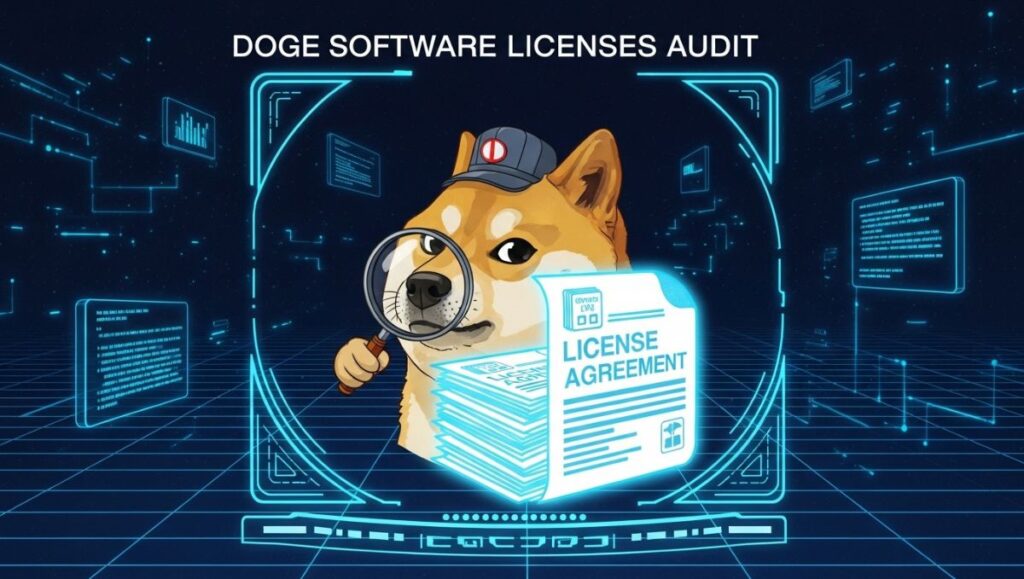Software licensing—especially in large organizations—is notoriously complex. Governments, enterprises, and non-profits alike often struggle to track which licenses are in use, which are idle, and which pose legal or cost risks. The recent controversy involving the Department of Government Efficiency (DOGE) and the U.S. Department of Housing and Urban Development (HUD) has brought this issue into the spotlight. In particular, “Doge Software Licenses Audit HUD” refers to a dashboard or audit effort aimed at exposing unused or misallocated software licenses within HUD and similar agencies.
This article explores:
-
What is meant (in media and public discourse) by “Doge Software Licenses Audit HUD”?
-
Key findings and claims from recent audits with respect to HUD.
-
The challenges and criticisms of such audits.
-
What a robust “Licenses Audit HUD” tool or framework would need.
-
Implications and lessons for governments and organizations managing software.
What Is “Doge Software Licenses Audit HUD”?
Broadly speaking, the phrase refers to a licensing audit over HUD’s software portfolio, carried out or publicized by the entity called DOGE (Department of Government Efficiency). The “HUD” in the phrase refers not to a heads-up display (commonly abbreviated HUD in software) but to the U.S. Department of Housing and Urban Development.
In some mentions, “Software Licenses Audit HUD” also plays on the double meaning of HUD as both the agency and a dashboard-style interface (HUD = Heads-Up Display). Some third-party blogs describe Doge’s Software Licenses Audit HUD as a compliance dashboard or tool that tracks license usage, flags risk, and provides governance visibility.
However, publicly what’s better documented is the audit claims made by DOGE about software usage at HUD and other agencies. The “HUD” in “Doge … Audit HUD” is mostly the target of the audit rather than the name of a software product.
Recent Audit Claims & Headlines: The DOGE–HUD Case
In early 2025, DOGE made sweeping claims about software waste within HUD and other U.S. federal agencies:
-
HUD allegedly held 11,020 Adobe Acrobat licenses that were not assigned to any users.
-
DOGE also claimed HUD had 35,855 ServiceNow licenses across three products, but only 84 active users for those licenses.
-
Other software named included Cognos, WestLaw Classic, and Java, with discrepancies between license counts and usage.
-
DOGE publicized the results on social media (X), claiming that HUD’s internal audit had confirmed or accepted many of these findings. The audit was framed under the broader mission of reducing “waste, fraud, and abuse” in government tech spending. WIRED+2LinkedIn+2
These findings generated media attention and criticism. For instance, WIRED published a critical piece arguing that while DOGE’s claims have visibility, they may oversimplify how software licensing works, and that the discrepancies might not inherently prove waste. WIRED
Challenges and Criticisms of the DOGE Audit Approach
While the reported numbers are eye-catching, there are substantial caveats and criticisms that must be considered. Some of the major challenges include:
1. Misunderstanding Licensing Models
Software licensing is rarely simple. For instance:
-
Licenses are often tied to devices, cores, or server instances—not necessarily “active user accounts.” This can lead to apparent “unused” licenses even when they serve backup, testing, or redeployment needs. WIRED+2Live Translate Hub+2
-
Enterprise deals sometimes require purchase of packages or bundles; the individual components may not all be in use yet. WIRED
-
Agencies may need buffer licenses to account for growth, peak demand, or contractor staffing fluctuations.
-
Some licenses are non-transferrable or have constraints preventing instant reallocation, so idle licenses might be held rather than wasted.
Because of this, what looks like “waste” at first can have managerial or contractual justification.
2. Lack of Full Transparency and Independent Verification
Much of what is publicly reported comes from DOGE’s disclosures or social media, not from independent audits by oversight bodies (e.g. Government Accountability Office). That raises questions about:
-
Data accuracy and completeness
-
Context and nuance omitted from headlines
-
Whether HUD fully agreed with DOGE’s interpretations
-
Potential political motivations in selecting or presenting audit findings WIRED+1
3. Overemphasis on Number Counts, Underemphasis on Use Cases
Simply counting licenses versus users does not capture how software is used across departments. Some licenses may serve:
-
Shared systems, servers, or machines used intermittently
-
Redundant or legacy systems during migrations
-
Cross-departmental tools where individual assignment is not tracked in the same way
Thus, headline numbers risk misrepresenting “waste” when part of complex infrastructure logic.
4. Potential Unintended Disincentives
Highly publicized audits can pressure agencies to:
-
Overcorrect by purging needed licenses prematurely
-
Avoid bulk licensing due to optics, leading to higher per-unit costs
-
Focus on short-term optics over sustainable governance
In short: audit zeal without deep domain insight can backfire.
What a Robust Software Licenses Audit HUD (Dashboard) Would Look Like
Given the pitfalls above, an effective Licenses Audit HUD—whether for HUD or any large organization—should be more than a flashy report. Below are key features and practices it ought to have:
| Feature / Practice | Why It Matters |
|---|---|
| Comprehensive Inventory & Discovery | It must detect all installed licensed software (servers, desktops, cloud, containers), across open-source, proprietary, and hybrid models. |
| License Metadata Correlation | Link discovered software to license contracts: version, vendor, terms, entitlements, renewal dates. |
| Usage Metrics & Utilization Tracking | Measure actual usage over time (e.g. hourly active users, CPU usage, access logs) to distinguish idle from essential licenses. |
| Policy/Rule Engine | Organizations define which license classes are permitted, restricted, or flagged—enabling automated alerts when policy thresholds are crossed. |
| Risk Scoring / Compatibility Checks | Evaluate legal or compliance risk (e.g. mixing GPL/AGPL, non-commercial clauses, patent clauses) and surface conflicts. |
| Audit Trail & Versioning | Keep immutable logs of changes, overrides, assignments, and exceptions for accountability and external review. |
| Integration into DevOps / CI/CD Pipelines | Embed license checks in build pipelines, code merging, or deployment stages so violations are caught early. |
| User/Admin Interface (HUD Style) | A real-time dashboard showing license health, alerts, usage heat maps, and recommended actions. |
| Reporting & Exporting | Generate compliance-ready reports for legal, procurement, or oversight bodies. |
| What-if / Optimization Suggestions | Recommend unused license reallocation or remove unnecessary ones. Possibly suggest alternative licensing models. |
If Doge’s audit is taken seriously, a next step would be to deploy such a HUD for continuous oversight rather than ad-hoc audits.
Implications, Risks, and Lessons
For Government & Public Sector
-
Transparency & Accountability: Large software contracts and usage are ripe for waste; proactive audits can improve trust.
-
Procurement Reform: Audits like this fuel momentum for legislation (e.g. the SAMOSA Act) to standardize license oversight. LinkedIn
-
Training & Capacity: Adequate technical and legal expertise is needed; misinterpretations of licensing can lead to false accusations or legal exposure.
-
Institutionalizing Governance: Rather than episodic audits, sustainable governance must embed license controls into IT operations.
For Private Enterprises & NGOs
-
The same audit techniques apply: companies often carry dormant or duplicate licenses. A “Licenses Audit HUD” approach can reduce costs and legal risk.
-
Embedding license visibility into DevSecOps flows helps avoid surprises later in development or acquisition.
For Oversight & Watchdog Bodies
-
Reports must be accompanied by methodological transparency and independent verification to avoid politicization.
-
Oversight should focus both on headline savings and on enabling better systems, not just public pressure.
Conclusion
The phrase Doge Software Licenses Audit HUD sits at the intersection of real government audit claims, public scrutiny of software procurement, and the rising awareness that license governance is a non-trivial operational domain. The DOGE–HUD case made headlines because it exposed what appears to be large discrepancies between software license counts and usage.
Yet the complexity underlying software licensing means that such audits need more than raw numbers—they require context, policy, technical insight, and sustainable tooling. A well-designed “Licenses Audit HUD” would offer continuous visibility, risk scoring, and integration with operations rather than being a one-off report.
Whether DOGE’s numbers represent true waste or headline-grabbing oversimplification remains debatable. But the broader takeaway is clear: software license management is too important to be handled casually. Organizations large and small can benefit from treating license governance as a first-class concern, with dashboards, policy engines, and integrated controls.






